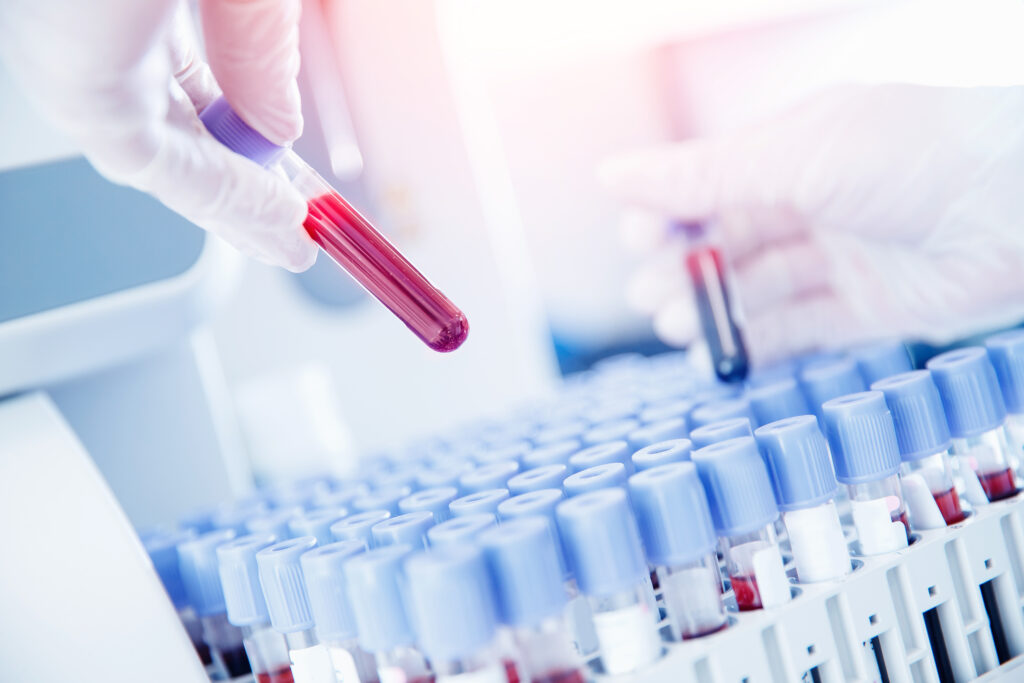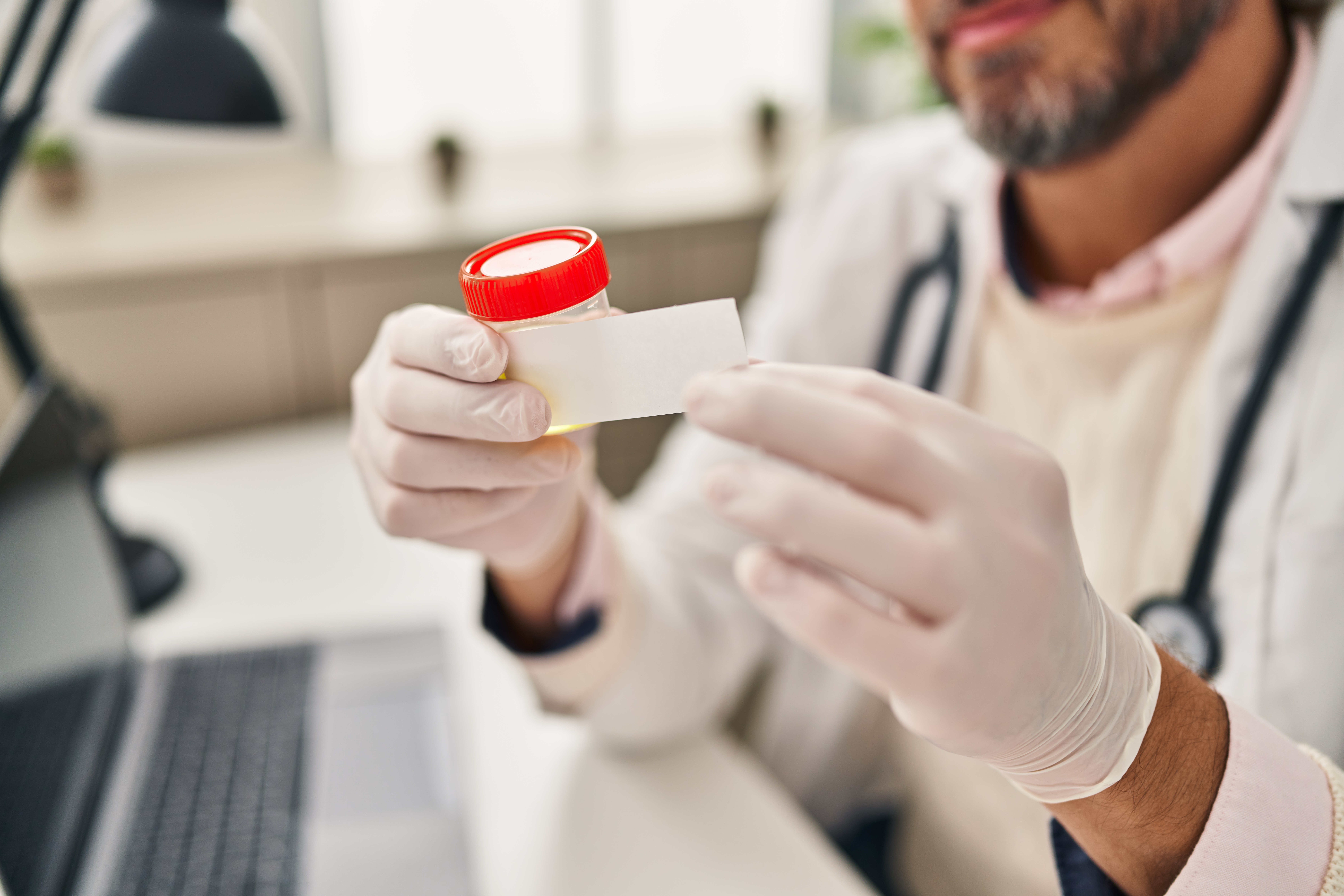A Comprehensive Guide to STD Testing Methods

STD Testing Methods
Many different testing methods exist to identify whether or not a person has a Sexually Transmitted Disease (STD). The STD testing method used will depend on what STD test you or your provider has ordered. Providers usually make this decision by considering your symptoms, medical or sexual history, and CDC recommendations.
For example, if you are experiencing symptoms of chlamydia or have recently been exposed to it, you might order a chlamydia test online. But if you experience symptoms that could be one of several different STDs, you might choose a test that checks for 10 common STDS. In this guide, we will explore the various testing methods for each STD. This will help you understand what to expect when you order your STD test online.
Skip to Section
Why Is STD Screening Important?
Sexually Transmitted Infection (STI). Screening is vital, especially for those of higher risk. That’s because you may have no symptoms. But left untreated, certain STDs can cause irreversible harm. Plus, you can pass them on to others.
STDs are also sometimes called “Sexually Transmitted Infections” and “Social Diseases”. While these terms can be used interchangeably, the word “disease” suggests that you have symptoms, while “infection” does not. The word “social” is a reminder that you can contract certain STDs without having sex through close social contact.
Getting an STD screening is important because most STDs can be cured. It helps you stay healthy and prevents spreading the infection to others.

How Often Should I Get Screened for STDs?
The CDC divides STD testing recommendations into six categories based on scientific evidence. Different groups require specific testing methods and frequencies.
- Women
- Pregnant women
- Men who have sex with women
- Men who have sex with men
- Transgender and gender-diverse individuals
- People with HIV
- Women
- Pregnant women
- Men who have sex with women
- Men who have sex with men
- Transgender and gender-diverse individuals
- People with HIV
Other factors can also increase the risk of certain STDs for certain groups. These factors include being in prison, having a lot of sexual partners, where you live, using drugs with needles, and even your race or ethnicity. If you’re not sure how often to get tested, talk to a medical provider or check the CDC guidelines.
Summary of CDC Guidance
- All adults 13 to 64 should have an HIV test at least once. Regular HIV testing is recommended for all adults and adolescents aged 13 to 64.
- Everyone pregnant should be tested for syphilis, HIV, hepatitis B, and hepatitis C as early in the pregnancy as possible.
- Sexually active men who have sex with men should get tested for:
- Syphilis, chlamydia, and gonorrhea as frequently as 3 to 6 months if frequent and multiple partners are involved
- HIV once a year and every 3-6 months if frequent and multiple partners exist
- Hepatitis C, once a year if living with HIV
- Sexually active women under 25 years of age should undergo annual testing for gonorrhea and chlamydia. If you’re a woman who’s 25 or older and has risk factors, like new or multiple sexual partners or a partner with a known STD, it’s recommended that you get tested for gonorrhea and chlamydia every year.
- All pregnant women should get tested for syphilis, HIV, hepatitis B, and hepatitis C early in their pregnancy. Those at risk for infection should also undergo testing for chlamydia and gonorrhea early in pregnancy. In some cases, repeat testing may be necessary.
- People who have sex or share drug equipment should get tested for HIV every year.
- Individuals who have engaged in oral or anal sex should consult with their healthcare provider to discuss throat and rectal testing options.
See how to order STD testing online.
- All adults 13 to 64 should have an HIV test at least once. Regular HIV testing is recommended for all adults and adolescents aged 13 to 64.
- Everyone pregnant should be tested for syphilis, HIV, hepatitis B, and hepatitis C as early in the pregnancy as possible.
- Sexually active men who have sex with men should get tested for:
- Syphilis, chlamydia, and gonorrhea as frequently as 3 to 6 months if frequent and multiple partners are involved
- HIV once a year and every 3-6 months if frequent and multiple partners exist
- Hepatitis C, once a year if living with HIV
- Sexually active women under 25 years of age should undergo annual testing for gonorrhea and chlamydia. If you’re a woman who’s 25 or older and has risk factors, like new or multiple sexual partners or a partner with a known STD, it’s recommended that you get tested for gonorrhea and chlamydia every year.
- All pregnant women should get tested for syphilis, HIV, hepatitis B, and hepatitis C early in their pregnancy. Those at risk for infection should also undergo testing for chlamydia and gonorrhea early in pregnancy. In some cases, repeat testing may be necessary.
- People who have sex or share drug equipment should get tested for HIV every year.
- Individuals who have engaged in oral or anal sex should consult with their healthcare provider to discuss throat and rectal testing options.
See how to order STD testing online.
What Are the Symptoms of STDs?
- Pain during sex
- Painful urination
- Unusual vaginal discharge or odor
- Itching of the vagina
- Penis discharge and/or itching
- Genital or rectal sores or bumps
If you have any of these common STD symptoms, you should get tested immediately. These symptoms could be one of several STDs. So, the best approach for most is to get a 10-panel STD test that tests for 10 different common STDs. If your partner has recently shared that they have a particular STD, you should ensure you’re testing for it.
STD Testing Methods: How Test Samples Are Collected

Urine Sample
Urine samples are collected in a private restroom in our lab. After washing your hands and genital area, you pee into a screw-top cup that you discreetly give to a lab technician. A urine test is primarily used to test for bacterial STDs like chlamydia and gonorrhea. It may also detect parasites like trichomoniasis and mycoplasma, which we can see under a microscope.
If the bacteria or parasite that causes these infections are present, you should talk to a provider and begin treatment. Bacterial STDs are usually treated with oral antibiotics. Sometimes, an injected antibiotic is necessary. Treatment for a parasitic infection will usually involve the appropriate anti-parasitic medications.
If parasitic infections are not treated, they can cause long-term health issues in women. These problems include pelvic pain and infertility.
There are some limitations to this testing method you need to know about. If you think you contracted a bacterial STD from oral or anal sex, urine tests won’t find it. You might need additional tests. For your health, speak openly with your provider or lab technician to make sure the urine test is sufficient.
Blood Sample
A skilled lab technician will take a blood sample from your arm of choice in our lab while you’re comfortably seated in a chair. They need one to two small vials, which will only take about 5 minutes for the whole process.
This method finds infections in the blood like HIV, hepatitis, syphilis, and herpes. Once again, these can cause irreversible harm if left untreated. So, it’s always better to know.
- Syphilis. In the early stages, syphilis is curable with antibiotics. It can cause organ damage and disfiguration if it is allowed to progress. Syphilis spreads by direct contact with a sore.
- Hep A and Hep B. They are not curable, but in most cases, they will clear up on their own. However, this doesn’t mean you couldn’t give it to someone else while infected. And some people will have long-term complications. The most common method for acquiring Hep A is when something contaminated with fecal matter comes in contact with the mouth. Hep B is transmitted through the blood or other bodily fluids.
- Hep C. Antiviral medications can cure 95% of hep C infections, according to the World Health Organization (WHO). Left untreated, it can lead to liver disease and cancer.
- HIV. HIV is not curable. However, treatment can significantly lower your risk of complications and spreading it to others.
- Herpes. Both herpes 2 (typically considered genital herpes) and herpes 1 (commonly called oral herpes) are not curable. However, certain antiviral medications can reduce your risk of spreading it to others and the frequency of outbreaks.
Genital Swab / Sore Swab / Discharge Swab
A genital swab generally includes taking a sample of discharge from the vagina or penis. We might also need to take the sample from a sore in the genital area. A healthcare provider typically performs a genital swab during the annual exam of a woman or a person who was assigned female at birth. For a man or person who was assigned male at birth receiving a genital swab, a small swab will take a sample from the penis.
We use genital swabs to detect gonorrhea and chlamydia. But they also detect other bacterial infections that may cause bacterial vaginosis. These are all curable with antibiotics.
A genital swab can also detect human papillomavirus (HPV), which can cause a type of cancer. HPV is not curable. But it is treatable.
We also use genital swabs to verify if sores and blisters are caused by the herpes virus by swabbing them directly.
Anal Swab / Sore Swab
Mouth Swab, Cheek Swab, Throat Swab
The anal swab is similar to the genital swab but for the anus. It can detect gonorrhea, chlamydia, and herpes.
Our technicians use a cotton mouth swab to take a sample from throat. This method can detect bacterial STDs in the mouth, such as chlamydia or gonorrhea.
Anal Swab / Sore Swab
The anal swab is similar to the genital swab but for the anus. It can detect gonorrhea, chlamydia, and herpes.
Mouth Swab, Cheek Swab, Throat Swab
Our technicians use a cotton mouth swab to take a sample from throat. This method can detect bacterial STDs in the mouth, such as chlamydia or gonorrhea.
STD Prevention: How Do I Prevent STDs?
According to the CDC, these are the best ways to reduce your risk of contracting an STD:
- Abstain from Sexual Activity. The most reliable method for you to prevent infection is to refrain from engaging in sexual activities, including anal, vaginal, or oral sex.
- Vaccination for Disease Prevention. Vaccination offers a safe and effective protection against hepatitis B and HPV. The CDC suggests getting vaccinated at age 11 or 12. But starting at age 9 is also okay. If you’re up to age 26 and haven’t been vaccinated yet, you should consider it. If you’re between 27 and 45 and haven’t gotten the HPV vaccine, talk to your provider. Hepatitis B vaccination is also recommended for those who missed it during their youth.

- Limiting the Number of Sexual Partners. Lowering the number of sexual partners can greatly reduce the risk of getting STDs. Nonetheless, it’s crucial for you and your partner to undergo STD testing and openly share your results.
- Practicing Mutual Monogamy. Mutual monogamy involves agreeing together to engage in sexual activity with only one partner who has committed to being sexually exclusive with you as well. To prevent STDs, it’s important for both partners to be sure they’re free of STDs and have a long-term, monogamous relationship. Open and honest communication with your partner is essential.
- Utilizing Condoms. Using male latex condoms correctly is a great way to reduce the spread of STDs during sex. Always employ a condom when engaging in anal, vaginal, or oral sex.
If you have latex allergies, you can opt for synthetic non-latex condoms. But it’s important to note that these may have a slightly higher breakage rate compared to latex condoms. Natural membrane condoms are not recommended for STD prevention.
STD Treatment: What Happens If I Have a Positive Result?
If you test positive, make an appointment with a provider to understand and treat your condition. Schedule a telehealth or in-person visit with a licensed medical provider.
How to Order STD Testing Online
You can order STD testing online with no upfront provider visits. See how.